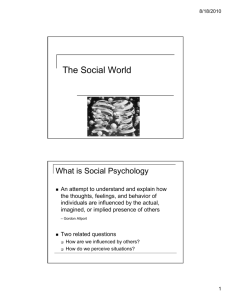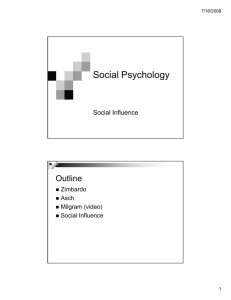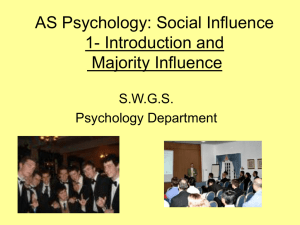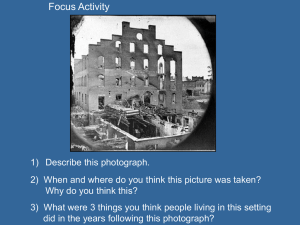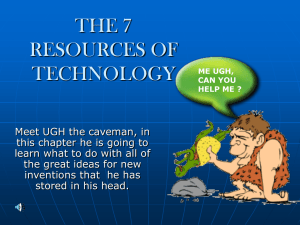The Social World - Heather Lench, Ph.D.
advertisement
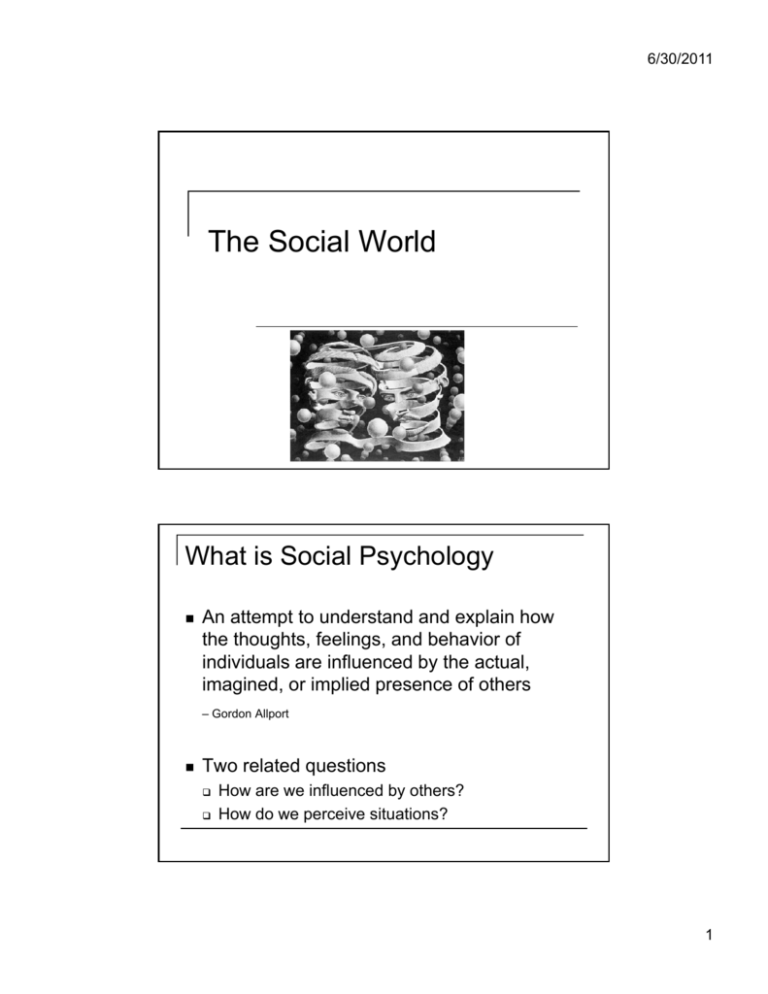
6/30/2011 The Social World What is Social Psychology An attempt to understand and explain how the thoughts, thoughts feelings, feelings and behavior of individuals are influenced by the actual, imagined, or implied presence of others – Gordon Allport Two related questions How are we influenced by others? How do we perceive situations? 1 6/30/2011 Lewin’s Magic Formula Person B = f (P,E) Environment Behavior (or affect or cognition) function Board Game Study (Ross & Samuels, 1993) Resident assistants in dorms nominated highly competitive and highly cooperative residents Invited to do a study on playing group games All played same game Only name was different--“Wall Street” or “Community” 2 6/30/2011 The Fundamental Attribution Error (FAE) This is the tendency (that ( many people have)) to make too many internal attributions for other people’s behaviors. Actor-Observer Difference The tendency to see other people’s behavior as dispositionally caused but focusing more on the situation to explain our own behavior Example: Writers to advise columns attribute their troubles overwhelmingly to the situation, but the advice giver attributes the problem to the person ((Schoeneman & Rubanowitz, 1985)) 3 6/30/2011 Decreasing and Increasing the Bias Video taped conversations Participants P ti i t then th see their th i di dispositions iti as important Factors that increase dispositional interpretation Salience (spotlights, loud shirts, movement, color) Conformity A change in a person’s person s behavior or opinions as a result of real or imagined pressure from a person or group of people Compliance: Conforming to an implied or explicit request in public while privately disagreeing Obedience: Conforming to an explicit request Acceptance: Conforming that also involves a change in belief 4 6/30/2011 Norm Formation via Informational Social Influence Informational Social Influence: The iinfluence Th fl off other th people l th thatt leads l d us tto conform because we see them as a source of information We believe others’ interpretation of an ambiguous situation is more correct than ours Milgram’s classic obedience study (1963) The design Participants arrived at the lab, ostensibly, with another participant (confederate; 47 yr. old, pleasant-looking, somewhat overweight fellow) Milgram wearing white lab coat Told study was on effect of punishment on learning Participants always assigned to be the teacher Confederate was the learner (word pair task) T Teacher h had h d tto give i escalating l ti shocks h k ffor iincorrectt responses (start at 15 volts, increase by 15) 5 6/30/2011 Increasing protests of learner 15-60: no protests 75-135: “Ugh!” 150: “That’s That s all, all get me out of here here. I told you I have heart trouble…” 210: “Ugh! Experimenter! Get me out of here…I won’t be in the experiment any more. 285: Agonized scream 315: Intensely agonized scream. “I told you I refuse to answer, I am no longer a part of this experiment. After 330 volts, no responses at all What about not conforming? How do we treat the nonconformist? JJohnny h R Rocco study t d (S (Schachter, h ht 1951) Deviant in group received most comments from others to convince him, until the end Ignored at the end, rejected Nominated him to be kicked off the island A i Assigned d hi him meaningless i l ttasks k 6 6/30/2011 Presence of Others Bystander effect (Darley & Latane) As the A th number b off people l iincreases, th the chances h of any one person helping decreases Diffusion of responsibility Evaluation apprehension Decision Making Perceive a Need: Does someone need help? No There is no problem Take personal p responsibility: Am I responsible? Weighing the Costs and Benefits: Is helping worth it? No It’s not my responsibility No It’s too risky, time consuming, unpleasant, etc. Deciding how to help: What should I do? No I can’t figure out what to do 7 6/30/2011 Perceiving a Need Researchers staged a fight between a man and a woman “I don’t know why I married you!” vs. “I don’t know you!” Requests can increase personal responsibility •Girl Girl on a beach with a radio – she goes for a swim •While she’s gone, a confederate steals the radio 8 6/30/2011 Step 3: Weighing Costs & Benefits What are costs of helping? Costs of not helping? Ri k titime, effort, Risk, ff t conflict fli t Guilt, going against morals Benefits to helping? Emotions,, greater g good g Step 4: Deciding How to Help & Action What do you do? A ti Actions can cause more h harm th than good d Bystanders may Want to help but be unable to May be caught in indecision 9 6/30/2011 Lab Affiliation for Fear Reduction Fear reduction (Schachter, 1959) Women invited W i it d tto llab b Told they would receive shocks High Fear vs. Low Fear We like similarity! Rewarding Everybody agrees Share interests Seek abstract ideals Deal with reality 10 6/30/2011 When we don’t like similarity Similarity as threat Phantom-other Ph t th technique t h i Emotionally disturbed or normal Differences rewarding No clones Requires safety Allows experts Sternberg’s Triangle Intimacy Romantic Love Companionate Love Consummate Love Attraction Infatuation Commitment Empty Relationship 11 6/30/2011 Thoughts of Love Attachment Caring D Dependence d on other th Promote other’s welfare Responsive to other’s needs Trust Self disclosure Behaviors of Love Saying “I love you” and verbal affection Ph i l expressions Physical i off llove (h (hugging) i ) Verbal self-disclosure Communicating nonverbally Material signs of love (presents) Nonmaterial love ((interest,, respect) p ) Willingness to tolerate other and sacrifice for relationship 12 6/30/2011 Feelings of Love How do people feel when in love? Sense off wellll b S being i (79%) Trouble concentrating (37%) Floating on a cloud (29%) Wanting to run, jump, scream (22%) Feeling nervous before dates (22%) Feeling giddy and carefree (20%) 13
